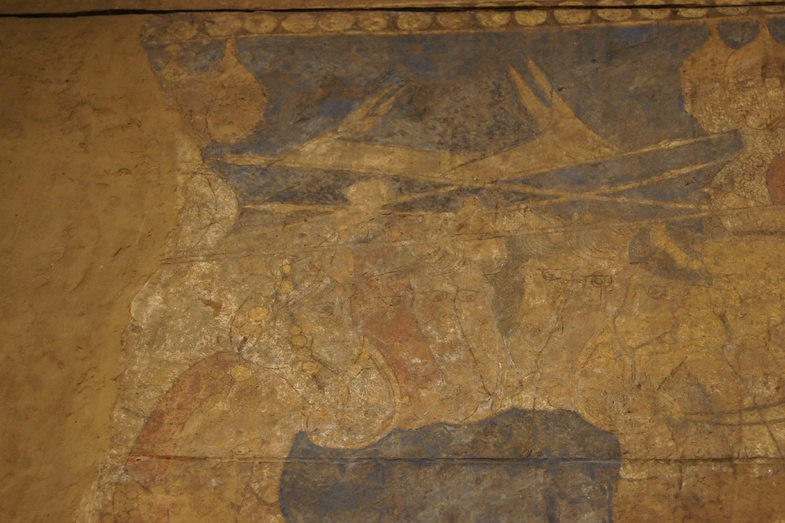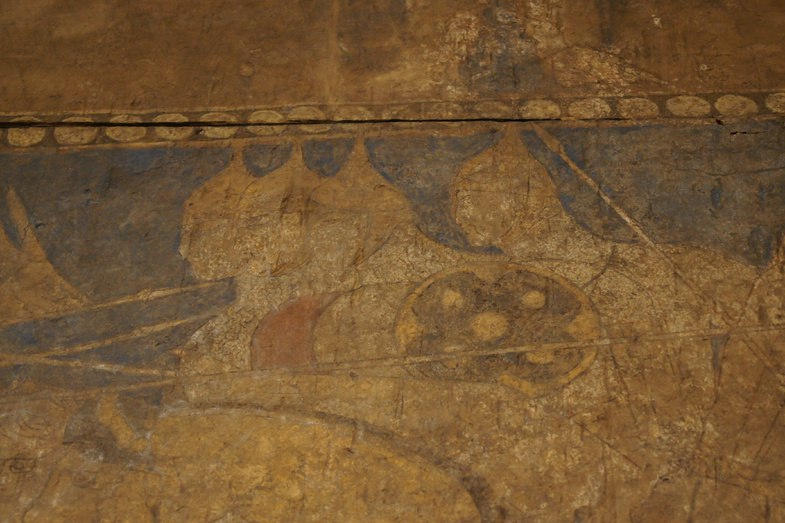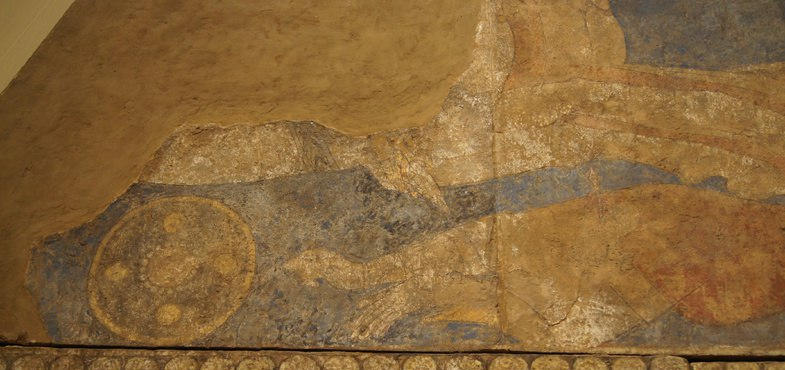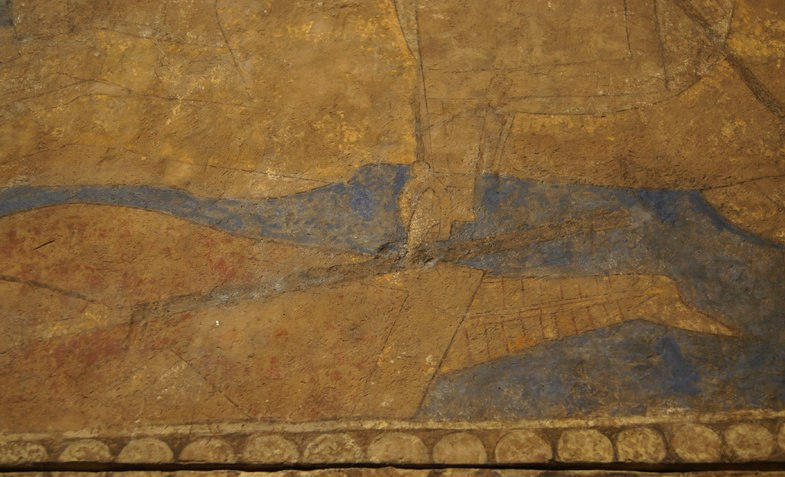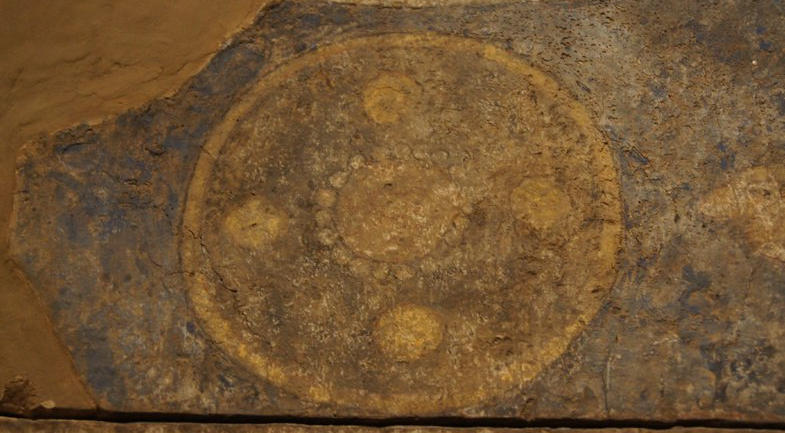
Shop Amazon - Create an Amazon Baby Registry
Charging Sogdian Cavalry, Piandjikent
Hermitage Museum, St. Petersburg
Sogdian Mural on an upper register in the ‘Blue Room’: Rustam cycle
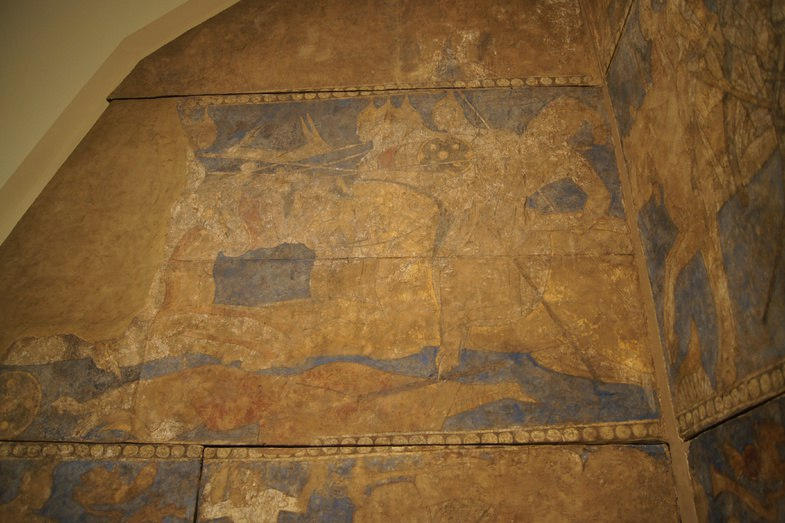


Referenced on p.53, Attila and the Nomad Hordes by David Nicolle (Author), Angus McBride (Illustrator)
The wall-paintings uncovered in the pre-Islamic palace of Piandjikent, not far from Samarkand, illustrate battles, hunting, feasting and religious celebration. Helmets are almost always very pointed with cheek-pieces and mail aventails, some pulled over the wearer's face. Warriors wear long or short-sleeved mail hauberks, some alone, others under tunics or lamellar cuirasses. Bows are carried unstrung in long cases, swords are straight and round shields are small while a distinctive form of horse-bit curves around the front of the animal's mouth. Many such features were adopted by the Muslim armies which conquered Transoxania shortly after these pictures were painted. (Hermitage Mus., Leningrad)
Referenced as figure 429 in The military technology of classical Islam by D Nicolle
429. Fresco from Piandjikent Room VI/41, 7th-8th centuries AD, Transoxanian, Hermitage, Leningrad (Aka S, Yaku).
pp.217-218 Vol. 1: Mail defences, migifars or zardīyah coifs, chashmak or sirash aventails,35 or girībān throat-covering gorgets,36 all appear in the pictorial sources and seem to have been quite widespread (Figs. 122, 146, 220B, 292, 422, 428, 429, 430, 435, 445, 446, 447 and 507).
35. Mubārakshāh, op. cit., p. 252; Firdawsī, op. cit., pp. 59 and 725; Ayyuqī, op. cit., verse 710.
36. Firdawsī, op. cit., p. 818.
But which of the various forms of mighfar corresponded most closely to the contemporary Byzantine skaplion is difficult to say, although one may assume that the mighfar and skaplion did fulfill the same function. They may even have had similar origins and probably embraced the same variety of structural materials37 (Figs. 201, 220A, 228, 236, 251, 625 and 636).
37. Haldon, "Some Aspects of Byzantine Military Technology from the 6th to the 10th centuries," p. 21; Aussaresses, op. cit., pp. 48-49.
